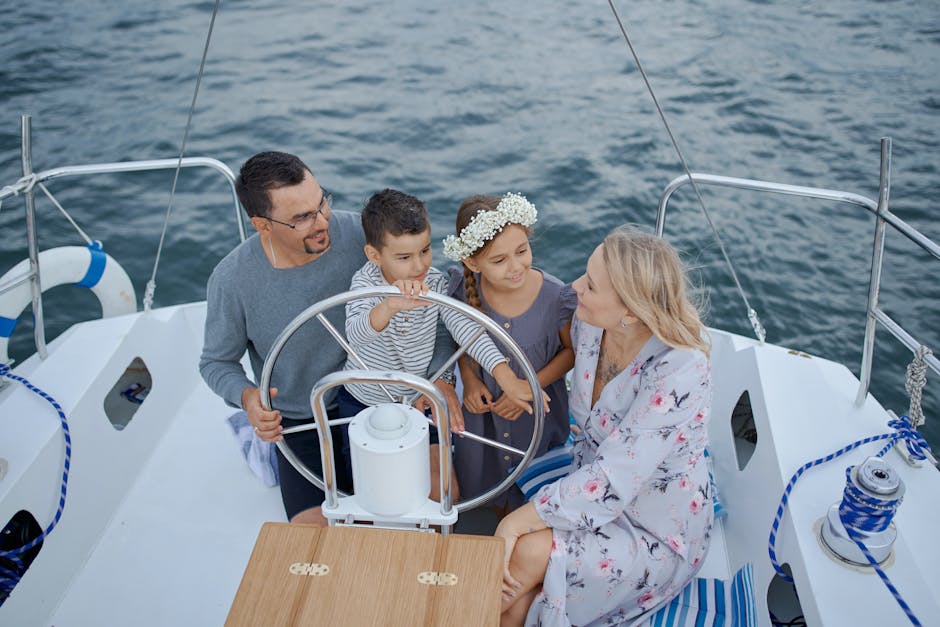Strategies for Traveling with Kids of All Ages
Traveling with children can be both a rewarding and challenging experience. Each age group comes with its own set of needs, from infants who require frequent naps and diaper changes to teenagers looking for more autonomy and entertainment options. Understanding these differences and planning accordingly can make
Understanding Age-Specific Needs
When traveling with children, it’s essential to consider their age and specific needs. Infants and toddlers, Often require more frequent stops for feeding, diaper changes, and naps. On the other hand, school-aged children may need activities to keep them entertained during long stretches of travel. Teenagers might prefer a more flexible itinerary with opportunities to explore on their own.
One useful strategy is to create a checklist tailored to each age group:
- Infants: Diapers, wipes, bottles, formula or breast milk, pacifiers, portable crib
- Toddlers: Snacks, sippy cups, favorite toys, travel stroller, extra clothes
- School-aged children: Books, tablets loaded with games and movies, travel games
- Teenagers: Smartphones or tablets with headphones, books or e-readers, portable chargers
This checklist helps ensure that you have everything needed for a smooth trip while minimizing stress and potential issues.
Packing Wisely
Packing smartly can significantly impact your travel experience. Overpacking can lead to unnecessary stress and inconvenience, especially when dealing with multiple suitcases and managing kids at the same time. It’s crucial to pack only what is necessary while considering the specific needs of your children at different ages.
| Age Group | Essential Items | Optional Items |
|---|---|---|
| Infants (0-2 years) | Diapers, wipes, formula/breast milk, baby carrier | Portable crib, extra blankets |
| Toddlers (2-5 years) | Snacks, toys, sippy cups | Travel potty seat, nightlight |
| School-aged Children (6-12 years) | Books/tablets for entertainment, travel pillows | Cuddly toy/blanket for comfort |
| Teenagers (13+ years) | Smartphone/tablet with charger, headphones | E-reader or portable gaming device |
This chart provides an overview of notable items organized according to various age brackets. Packing wisely means focusing on these essentials while adding optional items only if space allows.
Addressing the complexities of transportation issues.
The type of transportation can significantly affect how you plan your trip. Driving allows for greater freedom on the road, but it might necessitate more regular breaks when traveling with young kids. Air travel comes with its own set of challenges such as security checks and confined spaces. Trains and buses offer different experiences depending on the region you're traveling in.

If flying with young children:
- Select flights during nap times: This increases the chances of your child sleeping through most of the flight.
- Avoid layovers if possible:Direct flights make traveling easier by removing the hassle of switching planes and navigating through different terminals.
- Bring plenty of snacks and activities: Keeping kids entertained reduces stress for both parents and passengers.
If driving long distances:
- Plan for frequent stops: Children need breaks to stretch their legs and burn off energy.
- Create an engaging playlist or download audiobooks: This keeps kids entertained without relying solely on screens.
- Keep emergency supplies within reach: Have snacks, drinks, wet wipes, and first aid supplies easily accessible.
No matter how you’re traveling, being prepared will help you navigate any challenges that come your way.
Keeping Kids Entertained on the Go
Boredom is one of the biggest challenges when traveling with kids. Keeping them engaged during long trips can make Here are some strategies that work across different age groups:
- Toddlers: Interactive toys like sticker books or magnetic drawing boards can keep toddlers occupied without making a mess. Snacks are also great distractions.
- School-aged Children: Audio books or podcasts tailored to their interests can be both educational and entertaining during long car rides or flights.
- Teenagers:Encourage them to document their adventures throughout This keeps them engaged while also creating lasting memories.
You know your child best; choose activities that align with their interests to maintain engagement throughout
Cultural Considerations When Traveling Abroad
If you're venturing internationally with kids, understanding cultural norms can make your trip smoother. Some countries have specific attitudes towards children in public spaces, some are very welcoming while others may expect quieter behavior from young travelers. Researching these norms beforehand allows you to prepare your kids accordingly.
An example is Japan where public transportation tends to be quiet; noisy behavior might be frowned upon. In contrast countries like Italy or Spain tend to be more accommodating towards loud children in public places like restaurants.
Understanding cultural nuances goes beyond just observing behaviors; dietary preferences differ around the world, making it important to get to know local foods to guarantee that your child has meals they find appealing or at least acceptable. It's important to consider essential health precautions, including vaccinations, prior to visiting certain locations, as this protects both your child's health and that of those around them.
Successful family travel hinges on careful preparation that takes into account the unique requirements of each child at different ages. This includes selecting the right gear suited to their developmental milestones and curating activities that align with their interests at various stages!